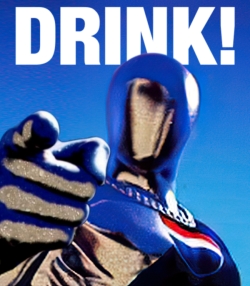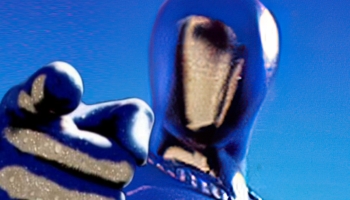 With the right circumstances, it’s possible for a logo to break free from the company it represents and become an iconic piece of history in its own right. It’s easy to point to Nintendo, PlayStation, and Xbox as some of the most prominent examples in gaming, but they’re not the only ones.
With the right circumstances, it’s possible for a logo to break free from the company it represents and become an iconic piece of history in its own right. It’s easy to point to Nintendo, PlayStation, and Xbox as some of the most prominent examples in gaming, but they’re not the only ones.
Bite-Sized Game History is back with the working designs of one such logo, as well a former wrestler’s previously-unknown connection to one of the most infamous games of the 1990s, and a farewell to an influential engineer you might not know.
![]() You can find a lot of dedicated video game historians on Twitter, and in 280 characters or less, they always manage to unearth some amazing artifacts. Bite-Sized Game History aims to collect some of the best stuff I find on the social media platform.
You can find a lot of dedicated video game historians on Twitter, and in 280 characters or less, they always manage to unearth some amazing artifacts. Bite-Sized Game History aims to collect some of the best stuff I find on the social media platform.
Before they founded Rockstar Games, the Houser brothers were deeply enmeshed in the UK’s music scene and this culture bled over into the game company after it relocated to New York. You can definitely see the evolution of the distinctive “R-Star” mark in Rockstar’s early logo concepts (which were recently unearthed by the Video Game History Foundation), and it’s not too surprising that most of these designs would have looked right at home on a turn-of-the-millennium album cover:
Just found in our digital archives: some funky early concept logos for @RockstarGames! pic.twitter.com/DTvKHuB5iB
— Video Game History Foundation (@GameHistoryOrg) November 23, 2021
Speaking of iconic logos, did you know that Pepsi once briefly broke into video games? In the 1990s, Pepsiman debuted as the soda’s superhero-like mascot in Japan. He was basically a slightly-less-deranged version of the Burger King or the Kool-Aid Man, delivering Pepsi to those who needed it with a heroic flourish. He also starred in Pepsiman, a game released for the PlayStation (and only in Japan) in 1999.
Pepsiman is notable for it’s wild caricature of American culture, as well as pioneering the endless runner genre more than a decade before Canabalt or Temple Run. Stranger still, the game was entirely in English and featured live-action skits between levels performed by American actor Mike Butters.
Though Pepsiman the advertising mascot was unknown in North America, a publisher considered bringing the game to the US. However, it would have been a slightly different experience for US players, as pro wrestler Brian “The Blue Meanie” Heffron recently revealed that he was approached to replace the soft drink mascot in the game (but WWE management forced him to turn it down):
True Story. In 2000 I had been approached about doing a video game based on the Blue Meanie that would be an American version of a Japanese game called Pepsi Man. I was all set to do it and was told by WWF I couldn't. I was released a couple months later. https://t.co/iJvEMXjkuD
— Brian Heffron aka The Blue Meanie (@BlueMeanieBWO) November 6, 2021
Finally, the world said goodbye to Masayuki Uemura on December 6th, who passed away last month at the age of 78. You might not know Uemura’s name, but he was integral to Nintendo’s success in the 1980s and 90s, serving as the chief architect of the NES and Super NES. He was also one of the leading voices in game preservation and historical studies as the founder of the Ritsumeikan Center for Game Studies in Japan.
His influence on modern games can’t be overstated:
We are deeply saddened by the loss of Masayuki Uemura. Not just man behind the creation of the Famicom & other historic hardware, he was a pioneer in the study of video games. He served as founder & director of @rcgstudies, leading Japan in game research and history studies. pic.twitter.com/f7fZztiCx8
— Video Game History Foundation (@GameHistoryOrg) December 9, 2021
Thanks to The Blue Meanie and double thanks to the Video Game History Foundation for supplying the trivia bits from this edition of Bite-Sized Game History. If you’re interested in more stories like these, be sure to follow me on Twitter.

